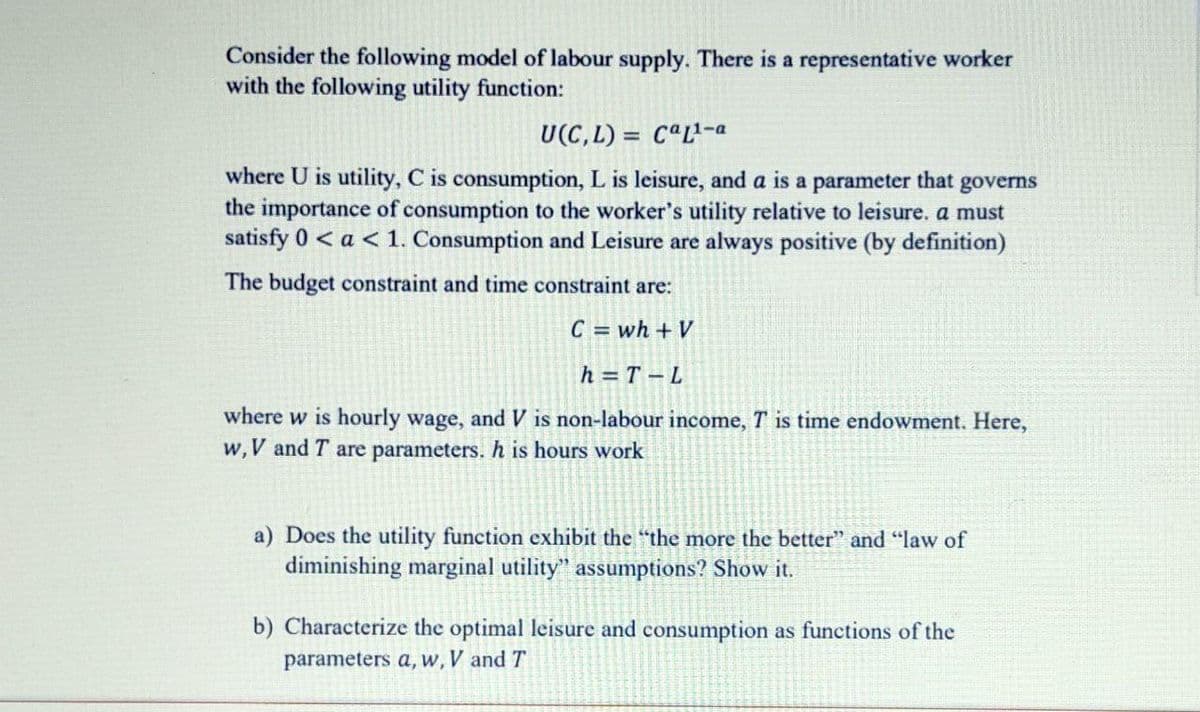Consider the following model of labour supply. There is a representative worker with the following utility function: U(C, L) = CªL*-a %3D where U is utility, C is consumption, L is leisure, and a is a parameter that governs the importance of consumption to the worker's utility relative to leisure. a must satisfy 0 < a < 1. Consumption and Leisure are always positive (by definition) The budget constraint and time constraint are: C = wh + V h = T – L where w is hourly wage, and V is non-labour income, T is time endowment. Here, w,V and T are parameters. h is hours work
Consider the following model of labour supply. There is a representative worker with the following utility function: U(C, L) = CªL*-a %3D where U is utility, C is consumption, L is leisure, and a is a parameter that governs the importance of consumption to the worker's utility relative to leisure. a must satisfy 0 < a < 1. Consumption and Leisure are always positive (by definition) The budget constraint and time constraint are: C = wh + V h = T – L where w is hourly wage, and V is non-labour income, T is time endowment. Here, w,V and T are parameters. h is hours work
Chapter11: Profit Maximization
Section: Chapter Questions
Problem 11.8P
Related questions
Question

Transcribed Image Text:Consider the following model of labour supply. There is a representative worker
with the following utility function:
U(C,L) = CªL²-a
where U is utility, C is consumption, L is leisure, and a is a parameter that governs
the importance of consumption to the worker's utility relative to leisure. a must
satisfy 0 < a < 1. Consumption and Leisure are always positive (by definition)
The budget constraint and time constraint are:
C = wh + V
h = T – L
where w is hourly wage, and V is non-labour income, T is time endowment. Here,
w,V and T are parameters. h is hours work
a) Does the utility function exhibit the "the more the better" and "law of
diminishing marginal utility" assumptions? Show it.
b) Characterize the optimal leisure and consumption as functions of the
parameters a, w, V and T
Expert Solution
This question has been solved!
Explore an expertly crafted, step-by-step solution for a thorough understanding of key concepts.
Step by step
Solved in 3 steps with 5 images

Knowledge Booster
Learn more about
Need a deep-dive on the concept behind this application? Look no further. Learn more about this topic, economics and related others by exploring similar questions and additional content below.Recommended textbooks for you

